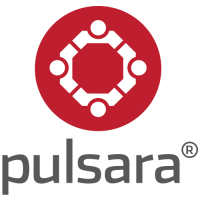The fire service is pivotal in caring for their community’s underserved population. Introducing a community paramedicine program allows public safety to dynamically meet those needs.
Yet, developing and successfully implementing a community paramedic program can be daunting. “Generally, anytime you’re implementing a new program, specifically a community paramedicine program, the challenge is you’re doing something you haven’t done before – and there’s nothing more comforting than tradition,” said Kris Kaull, chief growth officer at Pulsara. “If you lead the change, it means you’re a disruptor. There’s certainly something glamorous about that, but there’s also something very disrupting about being a disruptor.”
Developing a community paramedicine program involves several steps before visiting your first patient. After creating departmental buy-in from the top down, thoroughly evaluating the medical needs of those in your community, and selecting a few specific areas for your program to focus on, it’s time to put your plans into action. Yet even if it appears that your department has crossed every t and dotted every i, you might still find the execution of your program doesn’t start smoothly.
WHEN THINGS DON’T GO ACCORDING TO PLAN
During the first few weeks or months of your community paramedicine program journey, you can expect frustration and confusion. Creating – and maintaining – a community paramedicine effort is complex. To help manage it, departments should focus on five key areas recommended by leadership expert Dr. Mary Lippitt:
● Vision – Knowing why your department offers a community paramedicine program is essential to eliminating confusion. If everyone on your team knows why they’re doing what they’re doing, they will have an easier time finding success.
● Skills – The skills involved in community paramedicine differ from what’s typically focused on in EMS education, and these expectations can lead to anxiety. Making additional types of training available is key to treating complex patient illnesses.
● Incentives – It’s natural to ask, “What’s in it for me?” If that question goes unanswered, those in your department may resist their new responsibilities. This ties in closely with the vision your agency has created around your community paramedicine program and needs to be crystal clear before your program begins.
● Resources – Whether it’s not enough time, people or equipment, a lack of resources will frustrate anyone. Before launching your program, ensure this aspect is thoroughly considered to set your team up for success. If you need to contact community stakeholders for assistance, now’s the time.
● Action plan – Failing to plan is planning to fail. Outlining your community paramedicine program’s plan and making sure everyone in your department understands what’s required of them minimizes false starts and keeps things running smoothly.
RELYING ON ADDITIONAL EDUCATION
Vision, skills, incentives, resources and a plan are all critical to a successful community paramedicine program. Still, one in particular – skills – may not always be able to be accomplished in-house. Discussions around vision or an action plan can happen at any place or time, but it’s the clinical education and experience required to meet the needs of underserved community members that may prove challenging for your department.
Fire departments should encourage and support their community paramedics to complete specific training and pass a community paramedic exam.
Offered through the International Board of Specialty Certification, the CP-C exam will help ready firefighters to take on the expanded scope of patient care that comes with being involved in a community paramedicine program.
Unlike traditional education, which focuses on a patient’s immediate medical need, community paramedics may frequently assist with longer, more complex, chronic illnesses. As your program grows, so will the need for your team to obtain training across a wider range of medical conditions.
EVALUATING YOUR DEPARTMENT’S PROGRESS
With the right training, tools and plan, your department is ready to launch its community paramedicine program. But how do you know if your program is truly effective? Developing an evaluation plan can help your agency determine the value of your efforts and help identify areas for improvement.
“One of the best things to do is start with a baseline data set,” said Kaull. “As an example, consider patients who routinely use 911 and are consistently transported repeatedly. How many patients did you transport more than once over the last year? How many of those can we highlight and help explain why we were transporting them?
“If we understand the underlying problem, we can work with specialists to get those patients the needed help they deserve. Then, track patient outcomes. By reviewing the data, it’s possible to objectively identify whether the program is making a difference.”
But how do we communicate with the right specialist? How do we follow up with patients? Many in the fire service rely on the Pulsara platform during emergency medical situations to streamline the collection and dissemination of patient information. In addition, Pulsara is often used for real-time video communication during situations that community paramedics often encounter.
Pulsara allows firefighters to establish a line of communication with various providers depending on each patient’s needs. Whether first responders need a real-time dialogue with a patient’s primary care physician or a referral to social services, they can track patient data through the easy-to-use platform.
By reviewing patient interaction information through Pulsara, departments can better understand the effectiveness of their community paramedicine program. Evaluating the pilot phase of your program by analyzing your data in conjunction with exploring what lessons other departments have learned will be the ultimate key to your success.
“Continual reevaluation of your program is key,” said Kaull. “A least quarterly, ask yourself what things are going great, what things aren’t and what you should keep doing.”
Visit Pulsara for more information.
Read next: Community paramedicine: Where does the fire service fit in?





